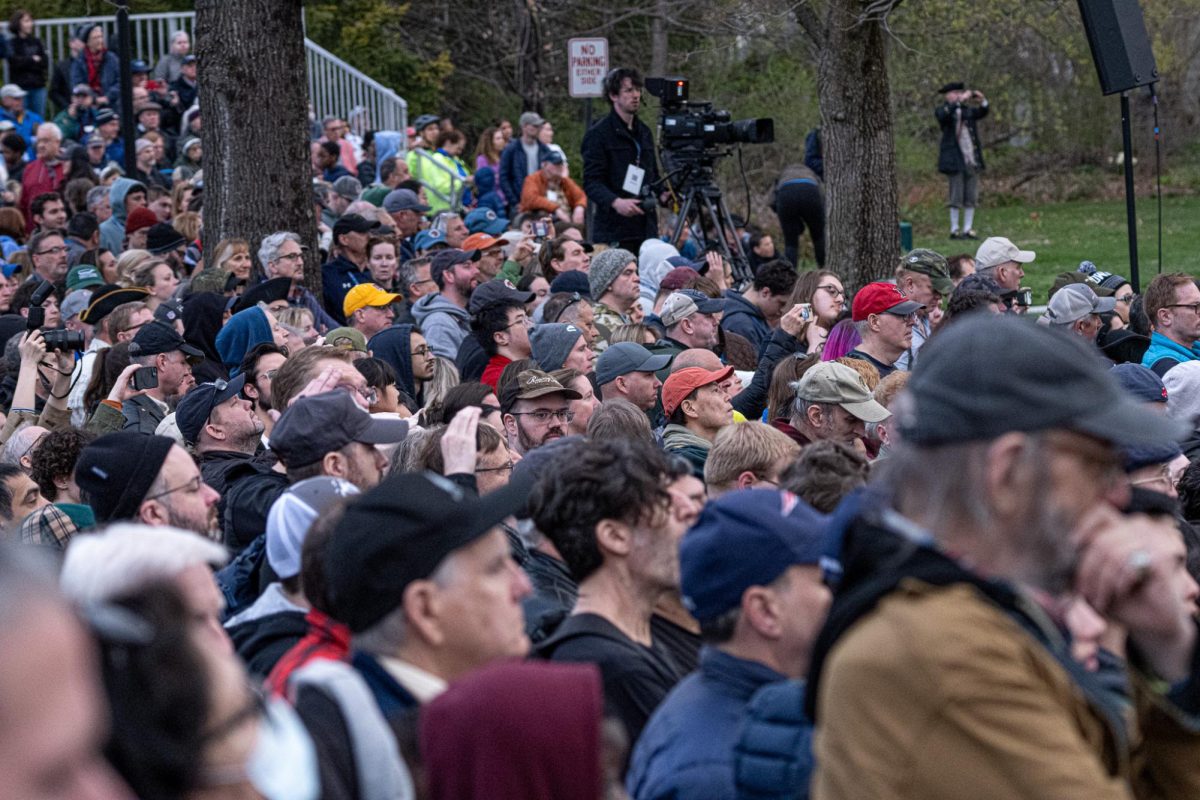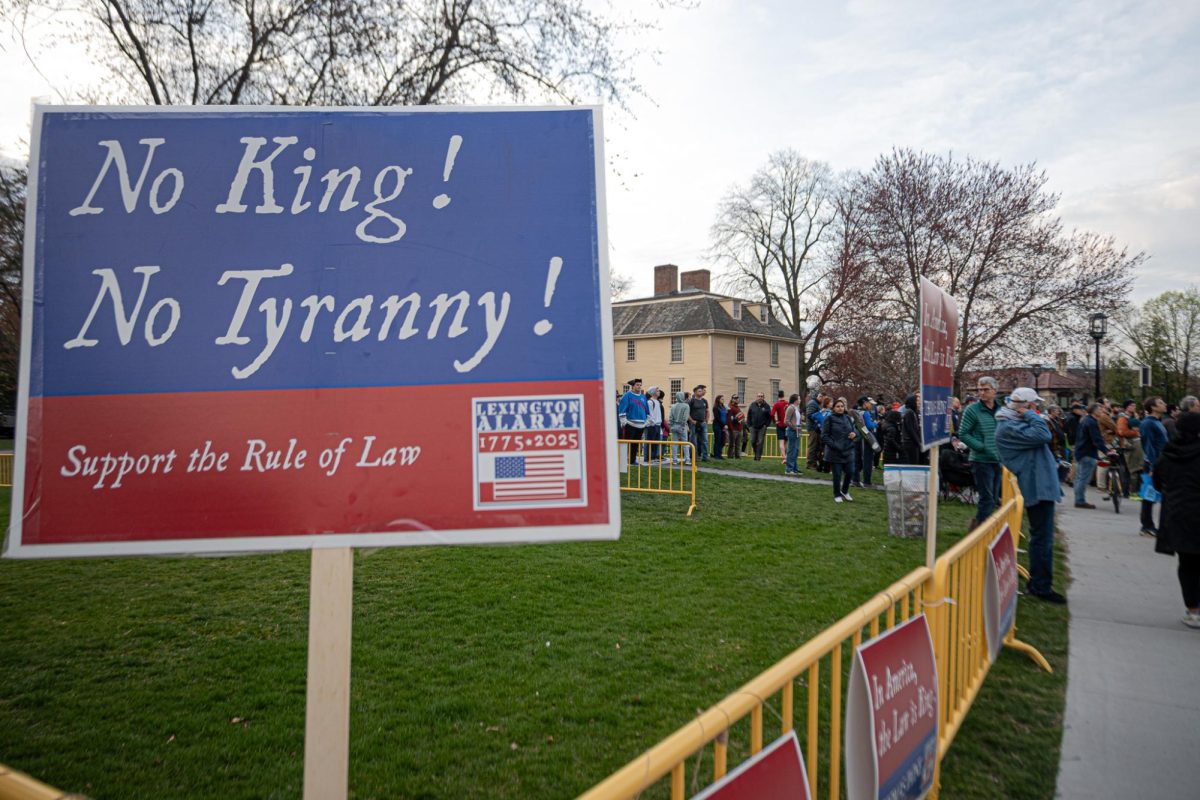Tens of thousands of spectators circled the Lexington Battle Green at 5:15 a.m. on April 19 to witness the start of the American Revolution. Silence fell over the crowd in anticipation of the reenactment of “the shot heard round the world.” As the first signs of dusk lightened the sky, many people stood on their tiptoes to catch a glimpse of the Battle of Lexington unfold.
People from all over the country traveled to honor this moment in history. Reenactors and Social Studies teachers Keith Reilly and Robert Buccheri traveled from Carmel High School in New York. The two men stood first in line at the gates of the Battle Green before 4 a.m. to witness this moment.
“It’s kind of like Christmas for us,” said Reilly, “ it’s great to see so many people who love history that are here to witness it.”
Reilly and Buccheri said Reenactments usually attract a couple of thousand people—the 250th benchmark attracted tens times that amount. The two teachers were grateful for the sheer number of people in attendance, noting that people across the political spectrum have different lenses through which they view this moment.
“People from the right and left can identify with this moment in time, and maybe it’s an opportunity for us as a country to come together,” said Reilly.

The crowd cheered under a unified sense of patriotism, watching the spectacle of the reenactment. As the British regulars, another term for a British soldier, marched onto the Green in their red coats, some crowd members booed those who fought against the minutemen.
By the time the sun came up, the crowds made it hard to move in the Green. Even the large screens displaying the reenactment had hundreds gathered in front of them.
For Liz Johnson, a spectator from Hingham, Massachusetts, the event was significant. She explained that for her it was more than just coming to see this moment; her ancestor, Henry Miles, was a part of this historic time period.
“They were 13 years old … an eyewitness to the Boston Massacre … and 17 years old when they were dumping tea into the Boston Harbor,” said Johnson.
Lieutenant Colonel Brandon Mace was another spectator who had a personal tie to the poignant day. Mace is a descendant of Mose Stone, a man who stood on the same Battle Green being celebrated that day, fighting the regulars.
Mace explained that, according to his family’s stories, Stone was a Corporal in Captain Samuel Bernard’s company, who responded to the call for action on April 19, 1775. Stone went on to survive the events of the Revolutionary War, was ultimately made captain, went on to serve post-war as a company commander, and then lived a “good life”—his granddaughter marrying into the Mace family. Mace felt this family connection through the reenactment.
“It’s an honor to be able to be here and witness the reenactors reenacting my part of my family history,” said Mace.
Mace drew a connection about what it means for him to serve, and what it probably means for his ancestor, Stone, to serve.
“There’s nothing special about me or Mose Stone. He didn’t set out to be a hero, or to birth a nation,” said Mace, “I don’t expect that 250 years from now, anyone is going to be saying my name in an interview. I’m an ordinary guy who felt serving was the right thing to do, but that’s what Stone also felt … If we looked back in time right now, he just felt like it was the right thing to do.”
This event itself was also meaningful for the reenactors participating in the retelling of the Battle of Lexington. Andrew Dench and Ben Theis, reenactors who participated as regulars, started marching at 1:30 a.m. to reach the Battle Green. Theis noted the importance of participating and honoring the 250th anniversary.
“This will not happen again in our lifetime,” Theis said. “It does add special significance today, in that it is not just a commemoration.”

Both those participating in the reenactment and those watching came together in Lexington for that commemoration. Mace hopes that everyone in attendance, regardless of where they stand politically, can see why the minutemen came together as one force.
“I hope they recognize that these are citizen soldiers, these are just people who lived in this community,” said Mace, “And when there was a need, they stood up and said yes.”